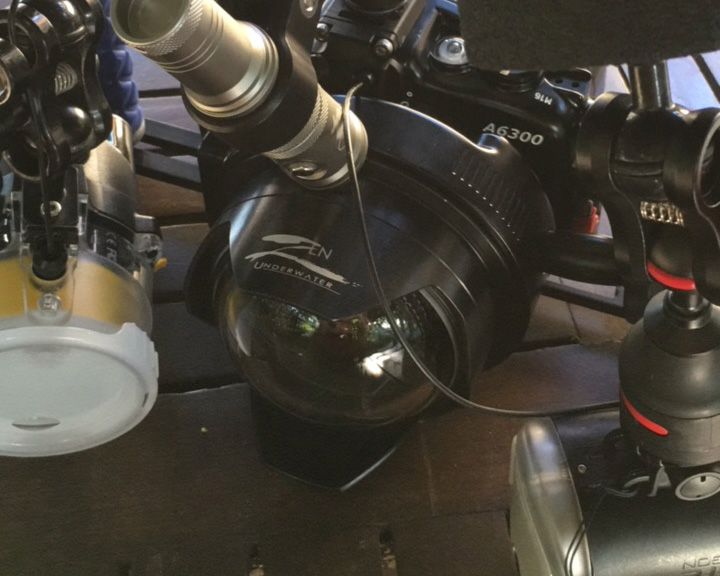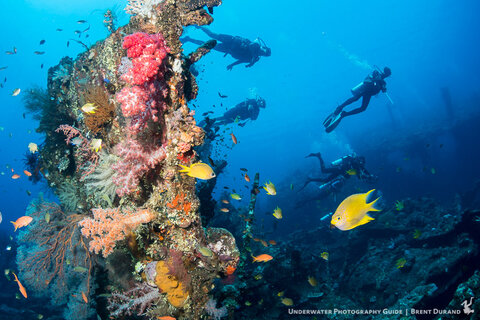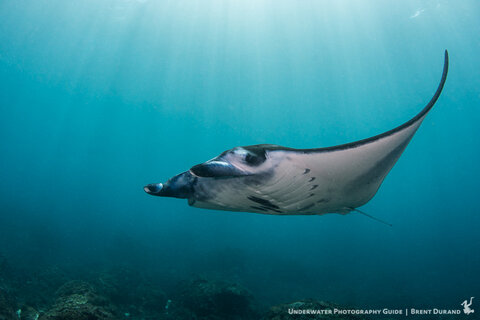Metabones, Tokina 10-17mm and the Sony a6300
November 1st, 2016
Metabones Adapter Review for Sony
Metabones makes lens adapters allowing use of Canon or Nikon lenses on Sony E-Mount mirrorless camera bodies. The adapters are a great way for shooters who are heavily invested in DSLR glass to use their lenses with new mirrorless systems like the Sony a7R II and Sony a6300.
The metabones adapters have come a long way in recent years, proving popular across many lenses used by topside photographers. But how does metabones work for underwater photo and video shooters?
I took the Metabones adapter and Tokina 10-17mm fisheye lens (Canon mount) while diving Bali, Indonesia for a recent Bluewater Photo workshop and some real underwater field testing. Below are my thoughts.

My Bali camera rig: Sony a6300 and Tokina 10-17mm fisheye with Metabones.
Sony a6300 Autofocus
The Sony a6300 has lighting-fast autofocus, with 425 phase detection AF points paired with a fast BIONZ X processor. In general, compact cameras use contrast to achieve correct focus while DSLRs use hybrid systems relying on both phase detection and contrast. Without getting into detail, the phase detection is much faster and more accurate and reliable. Mirrorless cameras like the Sony a6300 are now incorporating phase detection, which is quickly upping the mirrorless camera autofocus game.
Testing the Metabones Adapter
I shot the metabones adapter on probably 10+ dives in Bali, in conditions ranging from deep water near the USAT Liberty wreck to shallow water at the Nusa Penida manta cleaning station.
The metabones adapter setup works pretty well in water shallower than about 15-20ft, locking onto subjects and even tracking slow-moving subjects like manta rays (using back-button focus). Once you descend deeper than that, the setup has trouble finding focus. The gear will begin to hunt, and continue to hunt, taking you on a long journey through the entire focal range of the Tokina, passing right by the point of accurate focus. Even if you try to release the focus trigger (AF-On in my case) at approximately the right point of focus, the second delay leaves you far from where you want to be.
I tested the AF with sun at my back, sun in front and at various areas of color and contrast. The system would occasionally focus, mostly if I held it straight down towards light sand featuring some strong elements (for contrast). Once I discovered this I adjusted my shooting style in order to make the most of the gear.
A sharply focused image is a result of the hyperfocal distance (distance and aperture for that lens/sensor) and I knew that if I pre-focused at the same distance as my subject, then the image would be in relatively sharp focus. The photos in this review are a result of pre-focusing the camera on a suitable surface (bright sand, diver, etc) and then waiting to push the shutter until the subject was at that precise distance. Because I assigned autofocus to the AF-on button, when I pushed the shutter lever down it tripped the shutter without engaging the auto-focus drive.

Divers explore the USAT Liberty wreck. Shot on a6300 with Tokina 10-17mm plus metabones adapter. Lit with single YS-D1 strobe and single Venom 38 video light combo.
Recommendation and Conclusion
I recommend that those purchasing the Sony a6300 buy native Sony / Ziess glass for the camera. Sony makes some very nice lenses and if you're dropping the money on a nice body like the a6300, spend the money to get some nice glass that will complement the camera and help deliver the best images.
If you're heavily invested in Canon or Nikon glass and on a strict budget, then the Metabones adapter may be your solution. Note that in addition to the cost of the adapter, you need to factor in other dome port extension rings, etc.
The Bluewater Photo team is always available to answer questions on any of this gear. You can email them at sales@bluewaterphotostore.com.
If you are interested in diving Bali, don't forget to visit the Bali dive resorts page of our sister company Bluewater Travel.
Have fun out there!
- Brent

A manta ray cruises by at Nusa Penida, Bali. Shot on a6300 with Tokina 10-17mm plus metabones adapter. Lit with single YS-D1 strobe.




